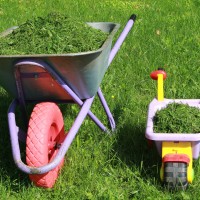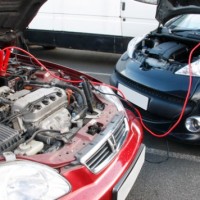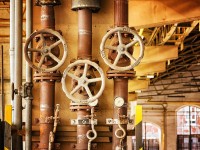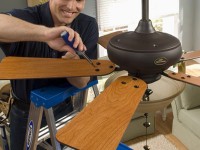Which heater to choose?
You might feel the need to install a new water heater (boiler) to provide the constant hot water supply in your house in a couple of cases. Obviously, replacing an old and leaky feature is something you should do as soon as possible to avoid a major breakdown. Such situations are just not really safe, as when the hater breaks down, it may cause the basement flooding, extremely dangerous gas leaks or a short circuit depending on what type of heater you have. Unfortunately, those terrible cases when old or simply broken heaters catch fire or blow up, ruining entire houses and even take away people’s lives aren’t rare now.
That is why changing up the heater in order to find more energy saving and safer alternative is also an important home improvement step. Since your good old heater was installed, a couple of production standards have improved. They are related to the safer operation both of electric and gas boilers, their energy use, volume and water heating speed. Moreover, you may calculate the approximate expenses of installing a certain type of heater, the prospective electricity and gas expenditures on the basis of the average monthly hot water consumption to see if one of the two main heaters’ types will be friendlier to your family budget.
Generally, electric and gas water heaters do the same simple job. They’re both able to heat up the water and provide you with warm showers and cozy baths. It’s proven that Americans pay up to 20% percent of their utility bills for heating up the water with the help of their boilers. It makes people think about different alternatives and energy saving options. It’s also proven that tankless boilers tend to appear more efficient, as they provide the hot water ‘on demand’ by heating up the cold water only when the house residents need it.
Unfortunately, they’re not quite able to meet the needs of an average family, which consists of more than 3-4 members. A limited supply of hot water may turn out into quite an unpleasant surprise in the morning, when your wife, husband or roommate have jumped into the shower before you and used all of it. But, it might be a perfect solution for a small family who lives in an apartment or a couple of buddies who rent it.
But most people usually decide to install more costly, but more reliable boilers that provide more prominent hot water supply. Again, you may choose electrical or gas heaters for the water storage (tank) you keep in a basement. At the first sight, electrical ones are more energy saving, as less electricity is required to heat up the same amount of water than gas. However, one unit of electricity costs more than one unit of fuel (natural gas). So, electrical boiler will provide you with more expensive hot water than the gas one. Also, HVAC professionals charge less for a gas water heater installation, especially if you already have a gas line figured out at the house. Moreover, the latter one heats up the water much faster. It’s able to convert approximately 50 gallons of water from completely cold to warm just in one hour. Meanwhile, it will take up to 3,5 hours for an electrical feature to cope with the same task. In addition to that, a decent electrical water heater costs almost as twice as its gas alternative. And finally, the electric feature is obviously unable to work in the power outages. But, the gas one will provide you with soothing warm water even in such conditions.
That’s why I’ll give you short gas hot water heater installation instructions. You may either follow them and install a brand-new water heating feature on your own or go to HireRush.com to find HVAC specialists and ask them to get that job done professionally.
How to install a gas water heater
- Contact your municipal department of inspections to see if you need a permit to install this gas feature. As plumbing codes are different in most areas, it’s better to check what you can do on your own and which part of the installation process should be definitely done by professional. Talk the department’s official and plumber through the heater’s installation process you’ve planned, don’t forget to mention the kinds of materials you are going to use for the new gas and water connections. My point is that it’s better to receive the guidance and professional advice first in order not to change things and reinstall a brand-new heater after the inspection.
- Gather your tools and materials. You’ll need to purchase the tank itself, gas and water pipes and piping accessories, fittings, pressure relieving valve, discharge and venting pipes along with connectors, some compound for the pipes’ threads and solder. You’re going to use a handful of tools as well. A screwdriver (4-in-1 works the best), an adjustable wrench, a pipe wrench, a tube cutter, a soldering torch, a wire cutter, a voltage tester, a measuring tape, some electrical and plumber’s tape. Safety glasses are required as well, but you may already have them at home.
- Turn off the gas supply that comes to the existing water heating feature. Simply turn the nearby shutoff valve a quarter of a turn. When that’s done, the handle should be at a right angle to the pipe. Don’t forget to shut off the main water supply too. Open the sink’s or the bathtub’s faucet on the lowest floor to drain the lines.
- Drain your old heater. Attach the garden water hose to the draining opening and get rid of the rest of the water in the heater. Warning: the water will come out of the tank being scalding hot! Disconnect the gas line close to the nearby union using a pair of wrenches and unscrew the pipe from the gas controlling flap with the help of a pipe wrench.
- Cut off the heater’s water pipes. Remove the vent pipe from the vent hood and put it aside. After that, with a take the tube cutter to cut both hot and cold water lines. Check if you’ve turned off the water supply once again before doing that. Unscrew the unions for galvanized pipe or the nuts on flexible connectors if you have them. Remove the old water heater. You don’t have to lift it, just slide it away.
- Attach the relief valve. Wrap the threads of the new temperature and pressure relief valve with Teflon tape. Make three or four turns. Use a pipe wrench to screw it tightly into the tank. When you’re done with that, proceed to securing a copper discharge pipe.
- Affix the pipe assemblies. Solder new copper adapters to 6-in. lengths of 3/4-in. copper and screw the assemblies into the outlet of the hot water and inlet ports of the cold water in the top of the tank. Add short, plastic lined nipples to shield against galvanic corrosion, especially if you have hard water or if they’re required by local codes.
- Attach the water lines to your new gas heating feature. Slide it into place and adjust the old tubing to fit the new (you may have to cut it to make it shorter or even extend it). Solder the tubing together with the help of the copper slip couplings. If the tubing doesn’t line up, offset the lines as needed with pairs of 45-degree elbows.
- Reattach the vent. Reconnect the vent. Shove it tightly over the draft hood and anchor it with three 3/8-in. No. 6 sheet metal screws. Predrill the holes. The vent should rise at least 12 in. vertically before turning at the first elbow.
- Use two wrenches to attach the gas line. Connect the main gas line with the heater. Coat the threaded ends with pipe joint solution and secure the first nipple into the gas flap. Work with two pipe wrenches not to stress the valve. Assemble the rest of the nipples, finish up with the union.
- Fill up the heater with water. Keep the drain valve closed and turn on the water supply at the main shutoff. Then, you may open the cold water flap to the heating feature. Don’t close it. Meanwhile, go to the nearest hot water faucet and turn it on to see if the water comes out of it. Don’t expect the water to be hot, as the heater is not working just yet. Examine all the joints and fittings for the water leaks.
- Check for leaks. Turn on the gas and inspect the gas connections for leaks. You may do that by brushing the water and dishwasher mixture over the joints. If you notice any bubbles, you have a leak. Tighten or readjust joints that leak. Wipe the joints dry and check them all over again. Call the plumbing inspector to check over your work.
- Don’t turn on the gas supply and don’t start your water heater until one of the HAVC specialists checks your gas connection work. Besides, I won’t suggest that you may try to connect a gas heater to the line that doesn’t already have a heater extension. First of all, that’s quite dangerous and requires much more professional skills and knowledge. Secondly, you shouldn’t let the system start working without professional’s examination anyway. And, you certainly don’t have to purchase a welder to complete the gas line part of the job. I’d rather recommend you to call a local HVAC company and let them do the job if you need to install a gas water heater from scratch. Find local HVAC services





I’m looking to get a new hot water heater. Thanks for the advice about how gas is cheaper than electric. Hopefully, I can find a licensed professional to install my water heater and keep me up to date on repairs that will be needed.
I’m glad you addressed the question of which heater to choose. I, myself, have been confused by this question because of the options that are out there. I think one of the best things to do is consult with a water heater company. They know which heaters are best for certain situations, and they can even inspect your home to figure out which one, specifically, is best for you. After wondering for a while which heater is best, I might just opt for consulting with a professional to save time.
We are looking at having a new boiler installed. Our current one doesn’t seem to be sufficient for our large family. Since I am not an expert, we will have to hire an expert to help us with the installation process. I’m glad you explained the difference between gas and electric boilers. As you said, an electric one might not meet the needs of an average family, so I guess we will have to get a gas one. Thanks for sharing!